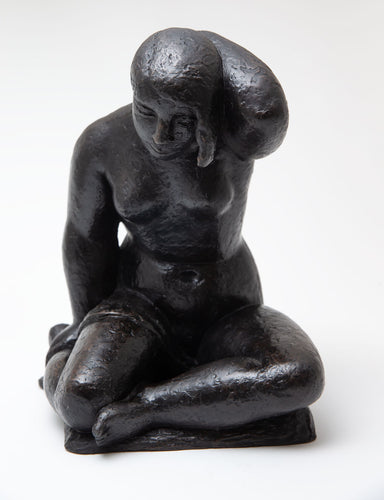By the next Biennale in 1948, Dobson had taken up a professorship at the Royal College of Art and was passed over for selection. He found his place taken by Henry Moore, the very man who had recommended him for the post – whether through goodwill or sabotage, we may never know – and whose stratospheric rise in the world of sculpture would eclipse Dobson’s own major contributions until the latter’s death in 1963.

Even the making of Dobson’s portrait of Lady Dorothea Cooper, one of the sculptor’s most successful commissions and which was selected for the 1940 Biennale, saw its fair share of bad luck. The modelling was completed in 1933, the same year Dobson suffered a serious fracture to his left arm. After an initial scare that it might require amputation, Dobson was given a cast by a liver specialist who had waived his service fee for a free portrait. The plaster was incorrectly set, leaving Dobson unable to lift his arm beyond his shoulder. With later, large-scale projects he would have to use a wooden ladder to work from above, his arm supported by a makeshift sling suspended from the ceiling.

Nevertheless, Dobson persisted. Photographs show him modelling Lady Cooper’s slender frame in his studio. Though he achieved a remarkable likeness through the graceful pose of the hand below the chin and his sitter’s youthful, almost seductive gaze, the finished work bears every hallmark of Dobson’s more self-directed sculpture.

There is a monumentality of form to the softened, rounded shoulders and arms that recalls the voluptuous nymphs of Maillol. The preference for human curve to mechanical hardness and geometry sets Dobson apart from his modernist counterparts, though there is simplification of form and surface here too across the chest, back, hands, and neck. Most importantly, the final bust is supremely tactile. Dobson favoured tools to thumbs, slowly and carefully excavating, plying, pushing and pulling his material about with sticks, hammers and spatulas. The resulting surface is flecked and variegated, revealing through the cold immovability of bronze the natural, malleable quality of the clay.

During the second World War, as the Blitz rained down over London, Dobson left his Chelsea studio for the safety of Bristol and the countryside. Upon his return, he found his workshop had been hit in a bombing raid. Debris had crushed many of the works he had been forced to leave there, while others had been plundered and sold or melted for scrap.

In a photograph of the ruined studio room the sole bronze cast of the portrait of Lady Cooper stands upright and undamaged, a miraculous survivor amidst less fortunate victims. For once, it seems, luck had been on Dobson’s side.










